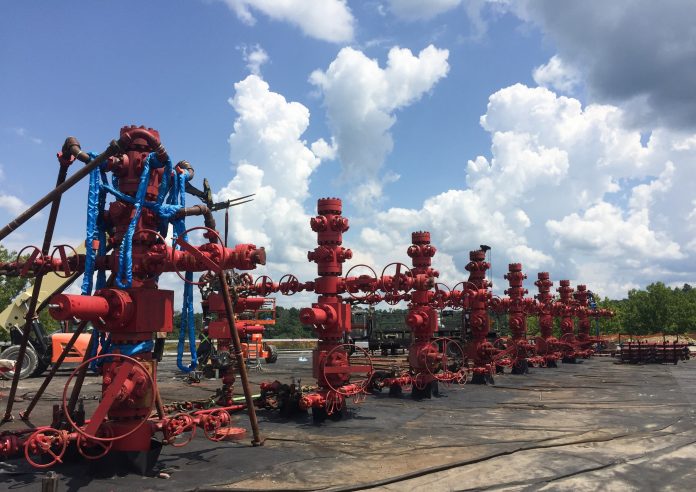
10 Things You Should Know About Oil and Gas Today:
The Big Story
Over the weekend, the OPEC+ countries finalized an agreement to cut roughly 10 million barrels of oil per day (bopd) of supply in an effort to eventually rebalance the global market. When combined with the 3 to 5 million bopd the industry in the U.S. and Canada will likely lose over the next few months, this agreement provides hope that the market will fall into some semblance of balance during the third quarter of 2020.
OPEC, oil nations agree to an unprecedented production cut – A good story from Politico summarizing the details of the agreement.
OPEC+, G20 Produce A Very Dim Light At The End Of A Long, Dark Oil Price Tunnel – Excerpt:
Both the U.S. and Canada will no doubt see massive production losses in the coming months, as drilling slows and producers shut in wells due to lack of market availability. Some are estimating the production losses in the U.S. alone could approach 3 to 4 million bopd due to market factors. This coming Tuesday, the Texas Railroad Commission will hold a hearing to consider exercising its authority to limit production on a well-by-well basis within the state’s borders, a power it has not exercised since 1973.
With a new report from Rystad Energy projecting that global demand for crude in April will be 27 million bopd below January 1 levels, it becomes clear that these supply reductions would at best close about half of what is the largest oil glut in history. The bet among these oil-producing nations is that demand will return quickly as consuming nations re-start their economies that have been shut down by the COVID-19 pandemic. That process has already begun in China and is expected to begin in the U.S. and Europe in May. The Rystad report, based on these assumptions, sees demand recovering quickly, with April’s demand loss of 27 bopd ramping down below the 10 million bopd level by the end of August.
Oil and gas production cuts continue in the Permian Basin, industry opposes limits – Excerpt:
In response to calls for state-mandated limits on oil production in Texas, President of the Texas Oil and Gas Association (TXOGA) Todd Staples said production must continue to generate resources for when the market recovers. Staples said the industry would survive on market-driven solutions.
“Although we face challenging and uncertain times, one thing remains certain, the world continues the need for abundant supplies of oil and natural gas,” Staples said. “Our industry has proven nimble and innovative during challenging times, and we remain confident we can do so now.”
OPINION: Railroad commissioners continue to exhibit great leadership – The Permian Basin Producer’s Association weighs in on Tuesday’s hearing of the Texas Railroad Commission to consider the implementation of prorationing for Texas oil wells.
Tuesday’s Texas Railroad Commission Hearing Will Be One For The History Books – A summation of what is at stake at Tuesday’s RRC hearing.
Pioneer Natural Resources CEO: The U.S. must do more to restrain oil supply – Excerpt:
As one of the largest independent oil producers in the country, my company, Pioneer Natural Resources, has called for the Texas Railroad Commission to join these efforts and adopt a temporary measure to spread the burden of curtailment more predictably and evenly across Texas producers than will otherwise occur. Such restraint will complement other actions around the world to stabilize oil prices. Carefully constructed pro-rationing, justified in only the kind of extraordinary circumstances now confronting the nation, will yield several profoundly positive results.
First, proactive state action would forestall calls for a federal bailout of the energy sector, which Pioneer neither seeks nor wants. Some of the largest oil producers in the U.S. oppose state action to reduce supply on the basis of preserving the free markets. The oil market has not been “free” for decades as supply management by OPEC has been the norm. It is simply a red herring to dismiss state-ordered curtailments as free market interference. Many of those same companies applaud the efforts of President Donald Trump to encourage other countries to cut production, and those companies are asking for low-cost federal funding for the industry. These positions are at odds.
Second, temporary pro-rationing would provide a framework under which oil producers could execute more orderly and equitable cutbacks. Innovative, independent producers have been at the forefront of the U.S. energy revolution; given some room to adjust, they will lead the industry’s future resurgence.
Third, accounting for 40% of U.S. oil production, Texas is uniquely positioned to send the right signal to the G20 nations in support of the president’s diplomatic efforts. The federal government can only act to cut production on federal lands. Accordingly, it is incumbent on Texas and other U.S. states to demonstrate leadership in adopting their own temporary curtailment programs.
Study: Permian has continued high rates of methane emissions – Excerpt:
With eyes in the sky and on the ground, the Environmental Defense Fund launched its PermianMAP initiative for an intensive study of methane emissions in the Permian Basin.
The EDF teamed up with the University of Wyoming to study the Permian because “there aren’t many studies looking at methane emissions despite its stature as the largest producing basin in the world,” said Colin Leyden, EDF’s senior manager of regulatory and legislative affairs in Texas.
The basin is also the largest emitter of methane, with methane escaping from operations at an estimated loss rate of 3.5 percent, he said in a phone interview. That’s roughly three times the national average reported by the Environmental Protection Agency and roughly 15 times the targets set by producers active in the region, he said.
Midland County emerging as Permian Basin’s last stand – Strong piece from the Houston Chronicle’s Sergio Chapa.
Exxon moves to slash methane emissions at 1,000 sites – Excerpt:Exxon Mobil Corp. is conducting field trials of “next-generation” methane technologies to lower emissions at nearly 1,000 sites in Texas and New Mexico, the company announced last week. The oil major said the eight advanced technologies include planes, helicopters and drones, as well as ground-based mobile and fixed-position sensors that can detect the greenhouse gas. They are being validated with optical gas imaging cameras and portable methane detection instruments, Exxon said. “The company is committed to immediately investigating and fixing methane emissions that are detected,” said Staale Gjervik, a senior vice president at Exxon, in a statement.
Biden’s fracking ban will derail environmental and economic gains – Good op/ed piece here.
That’s all for today.
















